Note: Slicing is not Trimming:
Trimming refers to cutting the brisket pre-smoking. If you’re looking to learn how to trim your brisket, I have a separate article for that.
Cut the Brisket in Half, Roughly 60/40 (Flat/Point)
That looks like this:
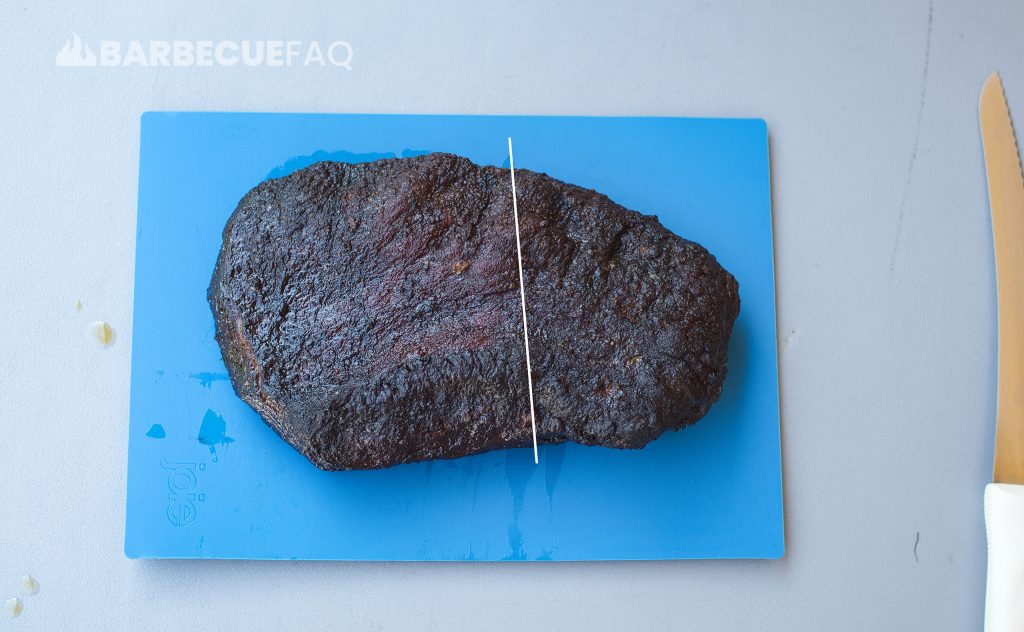
These muscles have apposing grain directions.
Cutting in half separates them and lets you slice them individually.
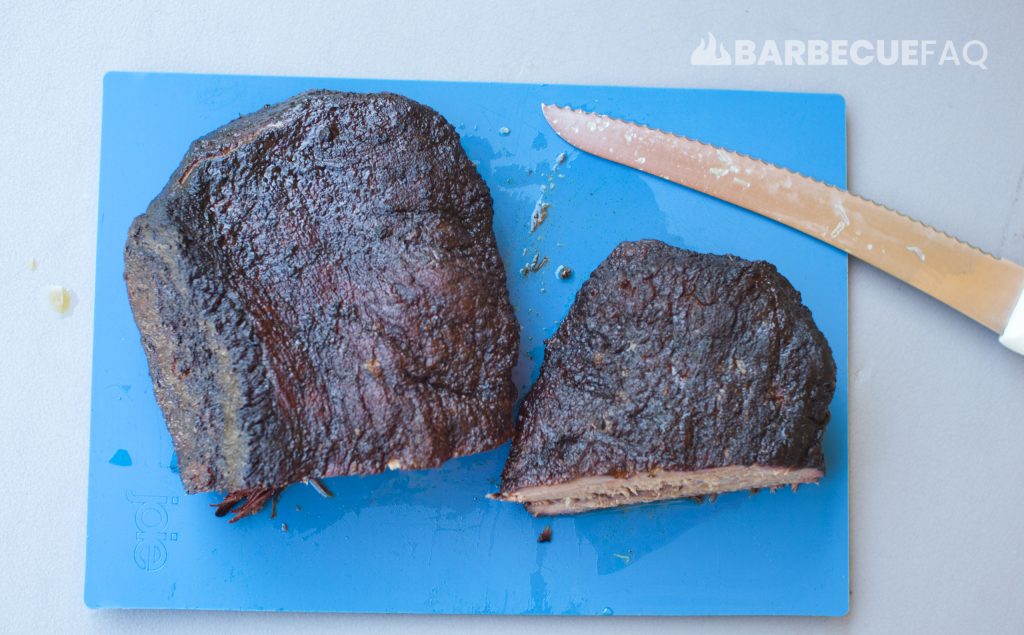
Slice the FLAT Against the Grain-ish
The reason I say “ish” is because a brisket is smoked until the point of tenderness, you DO NOT need to slice entirely against he grain to get tender meat.
This is completely different from Steak where slicing against the grain as much as possible makes the steak more tender.
A simple backyard way to slice is like this:
Create pencil thin slices.
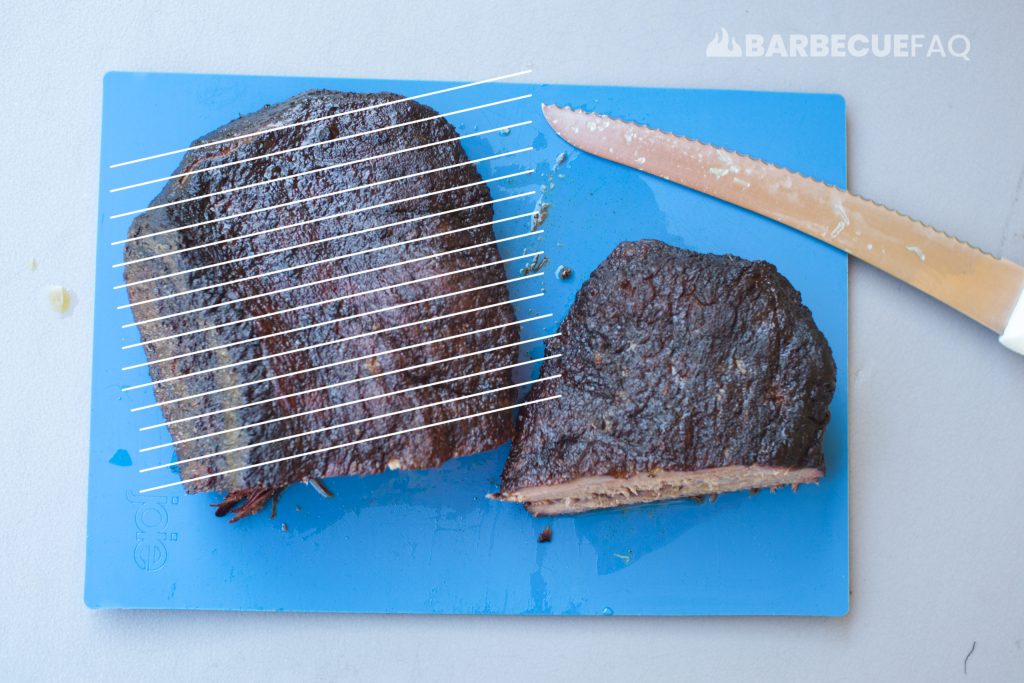
But, if you’re anal retentive, the grain of the flat is at an angle.
So you’d technically turn your knife to compensate.
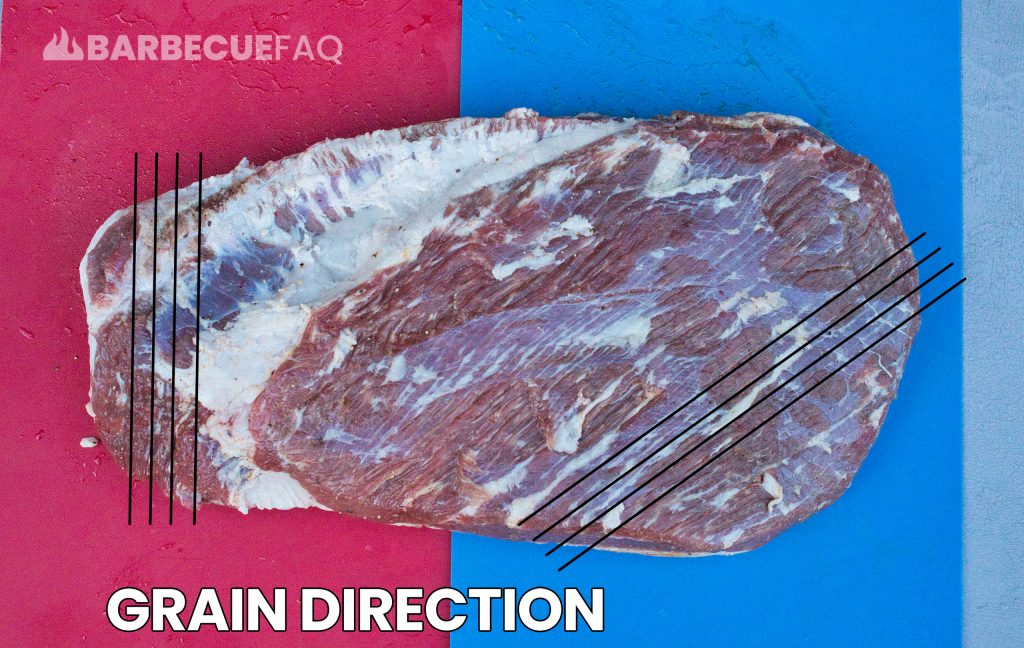
Doing the above you won’t notice a huge difference though.
You can test it for yourself and let me know.
Turn the POINT and Slice Against the Grain and Create Burnt Ends
The point’s grain is opposite that of the flat.
Slice a bit wider than the flat – a little more than a pencil-width.
You also can cut burnt ends into cubes from either edges.
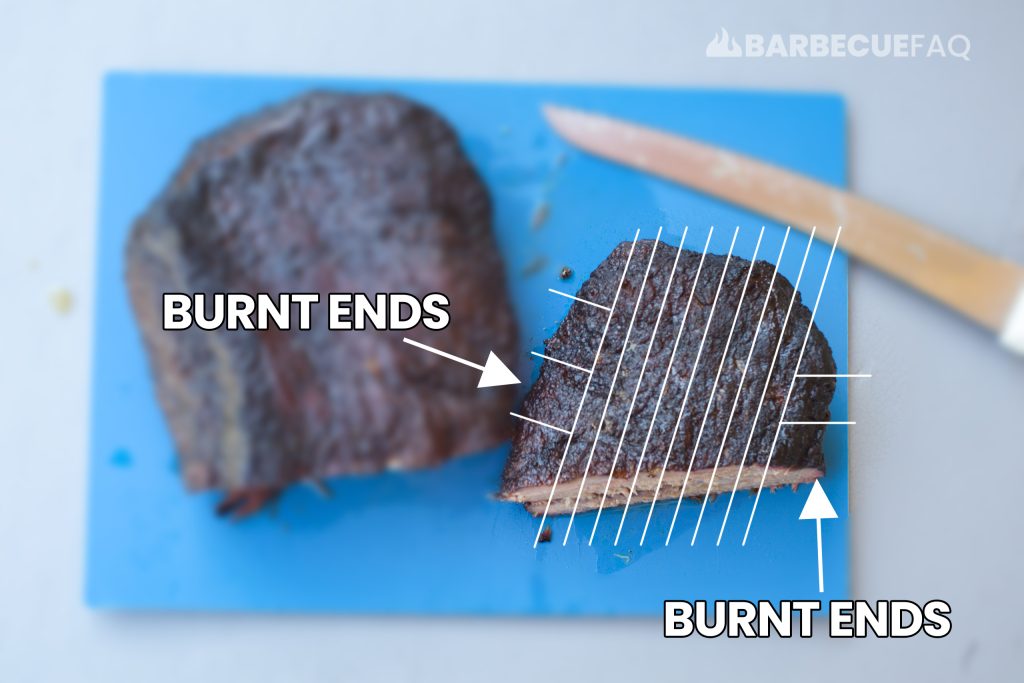
Double Checking How We Did
The flat looks tender and we sliced against the grain:
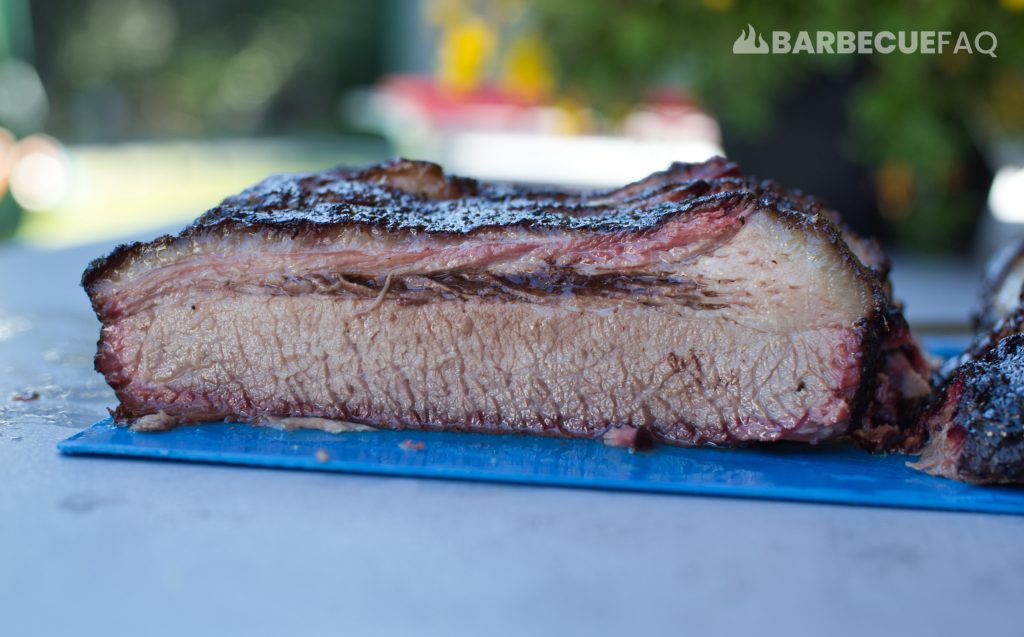
The point is similar and we have good burnt ends to offer People:
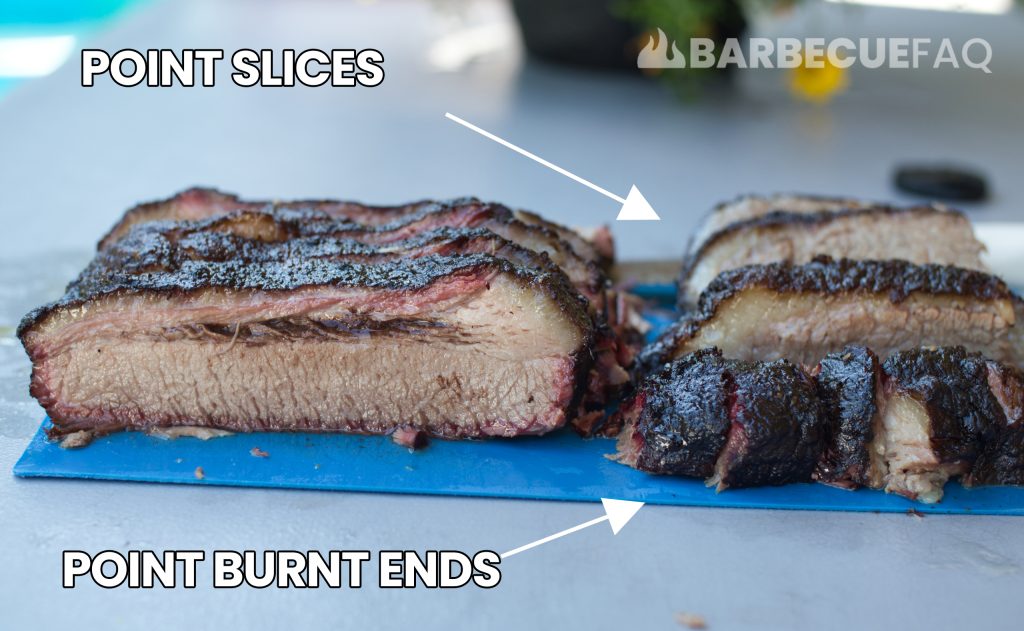


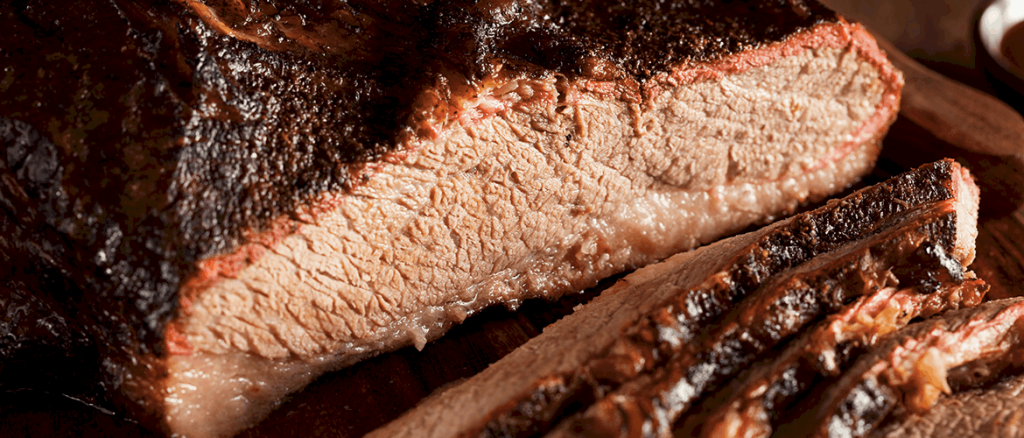

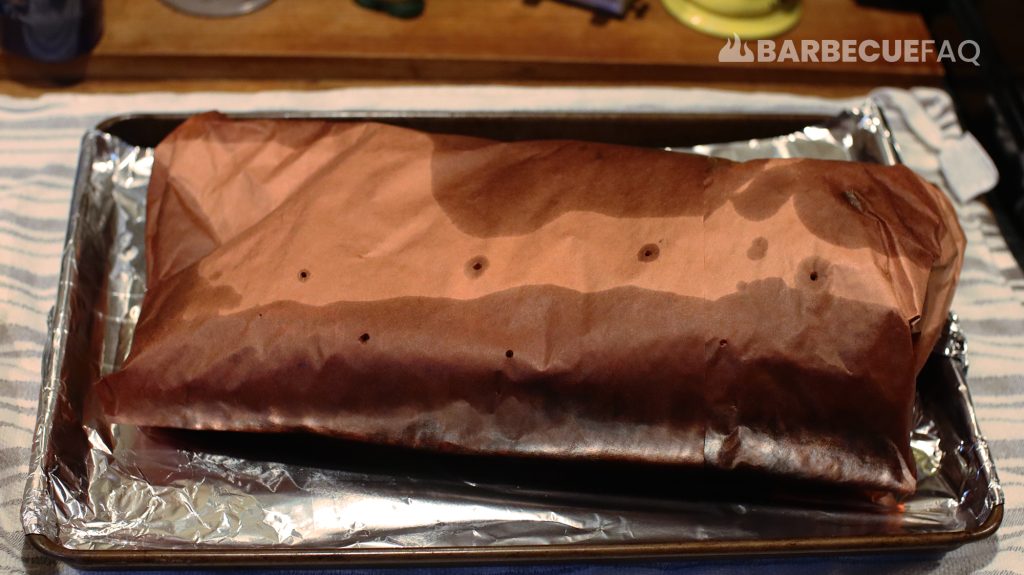
2 comments
David
That was very good and helpful. I needed little help on the spot to separate the flat and point.
Dylan Clay
Happy to help David.